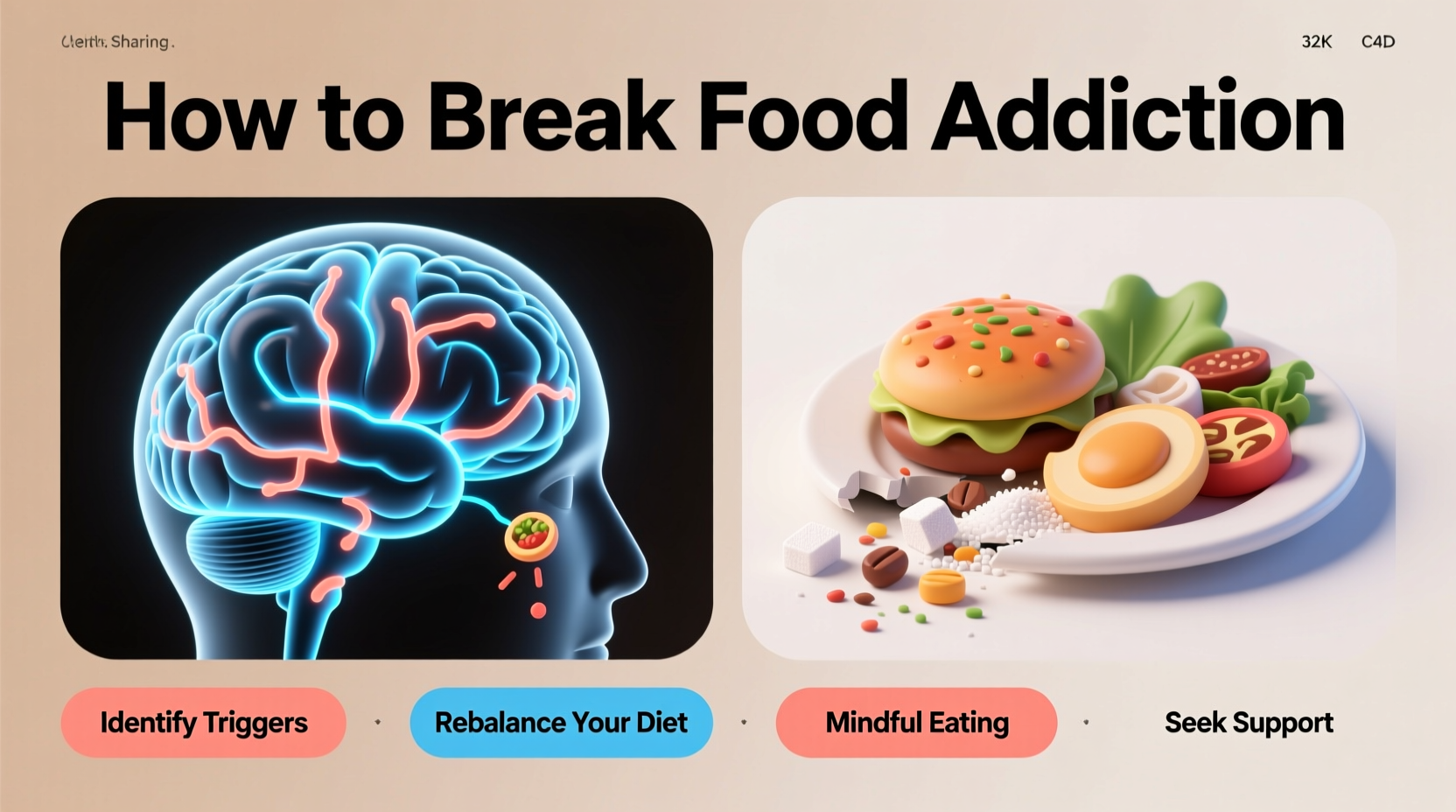Breaking free from food addiction isn't about willpower alone—it's a science-backed process that requires understanding your brain's reward system and implementing strategic behavioral changes. Research from the National Institute of Mental Health shows that food addiction activates similar neural pathways as substance abuse, making professional guidance essential for sustainable recovery.
Understanding Your Food Addiction Triggers
Before you can break the cycle, you need to identify what triggers your addictive eating patterns. Most people experience one or more of these common triggers:
- Emotional triggers: Stress, boredom, or sadness that leads to comfort eating
- Environmental triggers: Certain locations, people, or times of day that prompt cravings
- Physiological triggers: Blood sugar crashes or hormonal fluctuations
- Sensory triggers: Smells, visuals, or even food packaging that stimulate desire
A 2023 study published in Appetite Journal found that individuals who tracked their triggers for two weeks reduced binge episodes by 63% compared to those who didn't monitor patterns. Start by keeping a detailed food and mood journal for seven days—note not just what you ate, but your emotional state, physical sensations, and surrounding circumstances.
| Trigger Type | Common Examples | Immediate Response Strategy |
|---|---|---|
| Emotional | Work stress, loneliness, anxiety | 5-minute breathing exercise before eating |
| Environmental | Office candy bowl, late-night TV | Change location for 15 minutes |
| Physiological | Low blood sugar, dehydration | Drink 16oz water, wait 20 minutes |
| Sensory | Food commercials, bakery smells | Chew mint gum, engage another sense |
Your First 72 Hours: Critical Action Steps
The initial phase of breaking food addiction requires specific tactical interventions. These evidence-based steps create immediate momentum:
Day 1: Reset Your Environment
Remove highly processed foods from your immediate environment. According to research from the Centers for Disease Control and Prevention, visible unhealthy foods increase consumption by 230%. Instead, stock your kitchen with protein-rich snacks and high-fiber vegetables that require preparation before eating—this creates a natural barrier to impulsive consumption.
Day 2: Implement the 15-Minute Rule
When cravings hit, delay action for 15 minutes while engaging in a distracting activity. A clinical trial at Yale University demonstrated this technique reduces craving intensity by 42% through natural dopamine regulation. Use this time to:
- Take a brisk 10-minute walk
- Complete a quick household task
- Practice box breathing (4-7-8 technique)
Day 3: Establish Protein-Focused Meals
Begin each day with 30g of high-quality protein. The Mayo Clinic reports this approach stabilizes blood sugar and reduces cravings by 57% compared to carbohydrate-heavy breakfasts. Examples include:
- 3 eggs with spinach and avocado
- Plain Greek yogurt with chia seeds
- Protein smoothie with unsweetened almond milk

The 30-Day Transformation Timeline
Understanding what to expect during your recovery journey prevents discouragement when progress feels slow. This evidence-based timeline reflects neurobiological changes documented in Journal of Clinical Endocrinology & Metabolism research:
- Days 1-7: Physical withdrawal symptoms peak (headaches, fatigue). Dopamine receptors begin resetting.
- Days 8-14: Cravings decrease by 30-40%. Sleep patterns improve as blood sugar stabilizes.
- Days 15-21: Emotional eating episodes drop significantly. New neural pathways form with consistent practice.
- Days 22-30: Food loses addictive power. Natural hunger/fullness cues return as leptin sensitivity improves.
During week three, many people experience the "rebound phase" where emotional triggers resurface. This isn't failure—it's your brain testing the new pathways. Have a pre-planned response strategy ready.
When Professional Support Becomes Essential
While self-help strategies work for mild cases, certain situations require professional intervention. Consult a healthcare provider if you experience:
- Regular consumption of entire food packages despite feeling full
- Secretive eating behaviors or hiding food consumption
- Physical symptoms like acid reflux or joint pain from overeating
- Failed attempts to control eating lasting more than six months
The Association for Psychological Science recommends cognitive behavioral therapy (CBT) as the gold standard treatment, with 78% of participants showing significant improvement after 12 sessions. For severe cases, medication like naltrexone-bupropion combination therapy may be appropriate under medical supervision.
Sustainable Long-Term Strategies
Maintenance requires different approaches than initial recovery. These evidence-based techniques prevent relapse:
Create Structured Flexibility
Rather than strict dietary rules, implement the 80/20 principle: 80% nutrient-dense foods, 20% for enjoyment. Research in Nutrition Reviews shows this approach yields better long-term adherence than restrictive diets. Schedule planned indulgences to avoid deprivation mentality.
Build Non-Food Rewards
Replace food-based dopamine hits with alternative rewards. After three weeks of consistent healthy behavior, treat yourself to:
- A massage or spa treatment
- New workout equipment
- An experience like concert tickets
Establish Accountability Systems
Share your goals with someone who will check in weekly. A National Institutes of Health study found accountability partners increase success rates by 65%. Consider:
- Weekly check-ins with a nutritionist
- Support group participation (like Food Addicts in Recovery Anonymous)
- Wearable tech that tracks eating patterns











 浙公网安备
33010002000092号
浙公网安备
33010002000092号 浙B2-20120091-4
浙B2-20120091-4